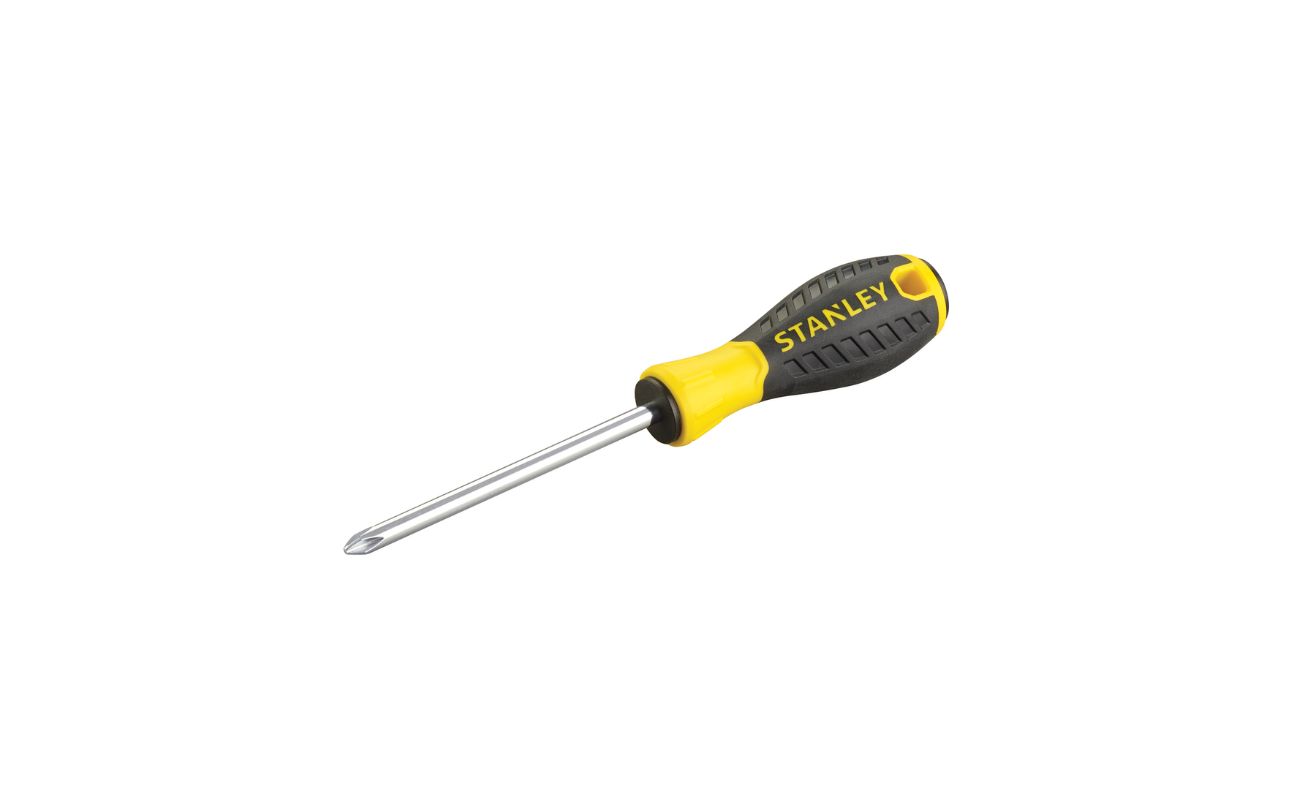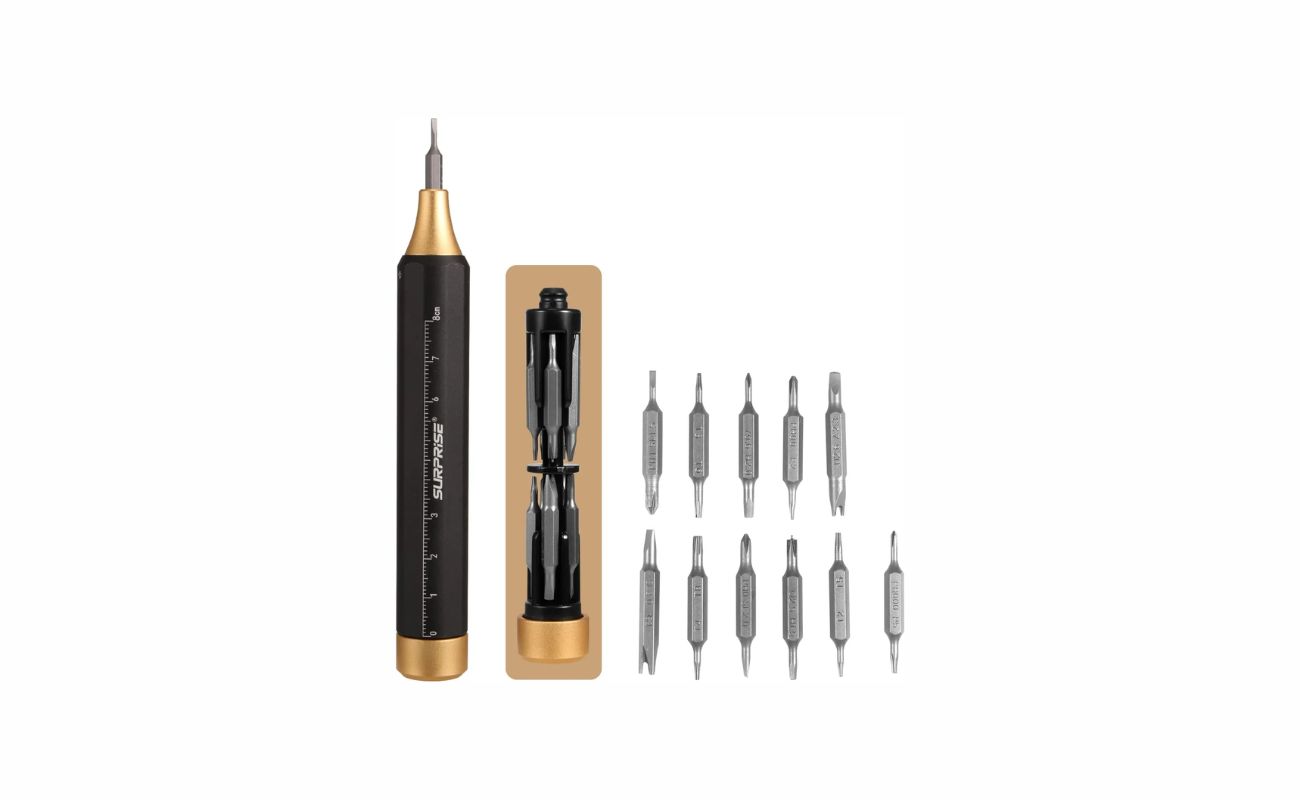Home>Renovation & DIY>Tools & Equipment>How To Use Power Screwdriver


Tools & Equipment
How To Use Power Screwdriver
Modified: January 9, 2024
Learn how to use a power screwdriver efficiently with our comprehensive guide. Get expert tips and tricks for using tools and equipment effectively.
(Many of the links in this article redirect to a specific reviewed product. Your purchase of these products through affiliate links helps to generate commission for Storables.com, at no extra cost. Learn more)
Introduction
Welcome to the world of DIY and home improvement! If you're a seasoned DIY enthusiast or just getting started with your first project, having the right tools can make all the difference. One such indispensable tool is the power screwdriver. This versatile device is designed to simplify the task of driving screws into various materials, saving you time and effort.
In this comprehensive guide, we'll explore everything you need to know about using a power screwdriver effectively and safely. Whether you're assembling furniture, installing shelves, or undertaking a full-scale renovation, mastering the art of using a power screwdriver will undoubtedly elevate your DIY game.
So, grab your power screwdriver, and let's dive into the world of efficient and precise screwdriving!
Key Takeaways:
- Master the art of using a power screwdriver by preparing your workspace, selecting the right bit, and adjusting torque settings for efficient and safe screwdriving.
- Prioritize safety by wearing protective gear, maintaining stable footing, and being mindful of your surroundings when using a power screwdriver. Regular maintenance and proper storage ensure its longevity and optimal performance.
Read more: How To Use A Screwdriver
Understanding the Power Screwdriver
Before delving into the practical aspects of using a power screwdriver, it's essential to understand its basic components and functionality. Unlike traditional manual screwdrivers, power screwdrivers are equipped with a motorized mechanism that drives the screw into the material with minimal manual effort. These tools come in various designs, including corded and cordless models, each offering distinct advantages based on the specific application.
Most power screwdrivers feature a comfortable handle for a secure grip, a trigger or button to control the rotation, and a chuck that holds the screwdriver bits securely in place. The chuck typically accommodates a wide range of bit sizes and styles, allowing for versatility in tackling different screw types and sizes.
Furthermore, power screwdrivers often incorporate adjustable torque settings, enabling users to regulate the amount of force applied when driving screws. This feature is particularly useful when working with delicate materials or when consistent screw depth is crucial.
Understanding the power source of your screwdriver is also crucial. Corded models rely on a constant supply of electricity, offering uninterrupted power for extended use. On the other hand, cordless models are powered by rechargeable batteries, providing portability and convenience, albeit with a limited runtime.
Whether you opt for a corded or cordless power screwdriver, these tools are designed to streamline the screwdriving process, making them indispensable for a wide range of DIY and professional projects. With a solid grasp of the inner workings and features of the power screwdriver, you're well-equipped to harness its potential in your upcoming endeavors.
Preparing for Use
Before embarking on any screwdriving task, it’s essential to prepare your power screwdriver and workspace for optimal efficiency and safety. Here are the key steps to ensure a smooth and productive screwdriving experience:
- Charge or Replace Batteries: If you’re using a cordless power screwdriver, ensure that the batteries are fully charged or replace them with fresh ones. This guarantees uninterrupted operation and prevents mid-task power depletion.
- Select the Right Bit: Assess the type and size of the screws you’ll be driving and choose the corresponding screwdriver bit. Most power screwdrivers come with a variety of interchangeable bits to accommodate different screw heads, so select the one that fits snugly and securely into the chuck.
- Adjust Torque Settings: Depending on your screwdriving requirements and the material you’re working with, adjust the torque settings on your power screwdriver if applicable. This ensures precise control over the screw depth and prevents over-tightening or stripping of screws.
- Clean the Workspace: Clear the area where you’ll be using the power screwdriver, removing any debris, obstructions, or potential hazards. A clean and organized workspace minimizes the risk of accidents and allows for unrestricted movement during the screwdriving process.
- Personal Protective Equipment: Prioritize safety by wearing appropriate personal protective equipment, such as safety goggles and work gloves, especially when working with power tools. This safeguards your eyes and hands from potential debris and ensures a secure grip on the power screwdriver.
By diligently preparing your power screwdriver and workspace, you set the stage for efficient and safe screwdriving operations. These preliminary measures not only optimize the performance of your tool but also contribute to a conducive working environment, allowing you to focus on the task at hand without unnecessary interruptions or safety concerns.
Using the Power Screwdriver
With your power screwdriver prepared and the workspace organized, it’s time to delve into the practical aspects of using this versatile tool. Whether you’re driving screws into wood, metal, or other materials, the following steps will guide you through the process:
- Positioning the Screw: Place the screw on the desired location, ensuring it aligns with the intended fastening point. For precise results, use a pencil or marker to mark the spot where the screw will be driven.
- Securing the Bit: Insert the selected screwdriver bit into the chuck of the power screwdriver, ensuring a secure fit. Tighten the chuck to hold the bit firmly in place, minimizing the risk of slippage during operation.
- Aligning the Tool: Position the power screwdriver perpendicular to the surface where the screw will be driven. Maintaining a steady and aligned angle minimizes the likelihood of the screw veering off course or causing damage to the material.
- Engaging the Trigger: Gently press the trigger or activation button on the power screwdriver to initiate the rotation. Start with a slow and controlled speed to guide the screw into the material gradually, ensuring accuracy and preventing potential slippage.
- Monitoring Depth: Pay close attention to the depth of the screw as it penetrates the material. Many power screwdrivers feature adjustable depth settings or torque control, allowing you to regulate the screw’s insertion depth with precision.
- Releasing the Trigger: Once the screw reaches the desired depth, release the trigger to halt the rotation of the power screwdriver. Avoid over-tightening the screw, as this can compromise the material or strip the screw head.
- Removing the Power Screwdriver: Carefully withdraw the power screwdriver from the screw, ensuring that the bit disengages smoothly from the screw head. This prevents any accidental damage to the surface or the screw itself.
By following these sequential steps and exercising caution throughout the screwdriving process, you can harness the full potential of your power screwdriver, achieving precise and secure fastenings with ease. Practice and familiarity with the tool will further enhance your efficiency and confidence in using the power screwdriver across a myriad of projects.
When using a power screwdriver, make sure to select the right size and type of screwdriver bit for your screw. This will ensure a secure and efficient fastening.
Safety Precautions
While power screwdrivers are invaluable tools for simplifying screwdriving tasks, it’s crucial to prioritize safety throughout their use. By adhering to essential safety precautions, you can mitigate potential hazards and ensure a secure and productive working environment. Here are key safety measures to observe when using a power screwdriver:
- Eye Protection: Wear safety goggles or a face shield to shield your eyes from flying debris, particularly when driving screws into hard materials. This precaution safeguards against potential eye injuries caused by wood chips, metal shavings, or broken fragments.
- Secure Workspace: Prior to using the power screwdriver, ensure that your workspace is stable and free from clutter. Secure loose materials, eliminate tripping hazards, and maintain a clear path to facilitate smooth movement and operation.
- Stable Footing: Maintain a firm and stable footing while using the power screwdriver, especially when working on ladders, elevated surfaces, or uneven terrain. Avoid overreaching and maintain a balanced stance to prevent accidental slips or falls.
- Proper Grip: Firmly grasp the power screwdriver with both hands, maintaining a secure grip on the handle during operation. This minimizes the risk of losing control of the tool and enhances stability and precision when driving screws.
- Unplug or Secure Batteries: When changing bits or performing maintenance on the power screwdriver, ensure that corded models are unplugged from the power source, and remove or secure the batteries in cordless models to prevent accidental activation.
- Awareness of Surroundings: Stay mindful of your surroundings and the presence of bystanders or potential obstructions. Communicate with others in the vicinity to ensure a safe working environment and minimize the risk of accidental collisions or disturbances.
- Tool Inspection: Regularly inspect the power screwdriver for any signs of damage, wear, or malfunction. Ensure that the chuck, trigger, and other components are in proper working condition before each use to prevent unexpected issues during operation.
- Storage and Transport: When not in use, store the power screwdriver in a secure and designated location, away from moisture, extreme temperatures, and unauthorized access. If transporting the tool, secure it properly to prevent damage and ensure safe handling.
By integrating these safety precautions into your screwdriving practices, you prioritize the well-being of yourself and those around you, fostering a culture of responsible and secure tool usage. Remember, safety is paramount in any DIY or professional endeavor, and embracing these measures enhances the overall experience of using a power screwdriver.
Read more: How To Use Torque Screwdriver
Maintenance and Storage
Proper maintenance and storage of your power screwdriver are essential for preserving its functionality and extending its lifespan. By incorporating routine maintenance practices and implementing appropriate storage measures, you can ensure that your tool remains in optimal condition for future use. Here are key maintenance and storage guidelines to uphold:
- Cleaning: After each use, wipe down the power screwdriver with a clean, dry cloth to remove any accumulated dust, debris, or residue. Pay particular attention to the chuck and bit holder, ensuring that they are free from obstructions that could affect their performance.
- Lubrication: Apply a small amount of lubricating oil to the moving parts of the power screwdriver, such as the chuck and trigger mechanism, to maintain smooth operation and prevent corrosion. Refer to the manufacturer’s recommendations for suitable lubricants and application methods.
- Bit Maintenance: Inspect the screwdriver bits for signs of wear, damage, or dullness, and replace them as needed. Properly store the bits in a designated case or organizer to prevent loss and maintain their sharpness for efficient screwdriving.
- Battery Care: If your power screwdriver is cordless, adhere to the manufacturer’s guidelines for battery maintenance and storage. This may include proper charging practices, avoiding extreme temperatures, and periodic battery conditioning to optimize performance and longevity.
- Storage Environment: Store the power screwdriver in a dry, well-ventilated area away from direct sunlight and moisture. Consider utilizing a tool chest, toolbox, or wall-mounted organizer to keep the screwdriver secure and easily accessible for future use.
- Protection from Impact: To prevent accidental damage, store the power screwdriver in a dedicated compartment or case that provides cushioning and protection from impacts or falls. This safeguards the tool from potential dents, scratches, or internal damage.
- Periodic Inspection: Conduct regular inspections of the power screwdriver to identify any signs of wear, loose components, or potential issues. Address any maintenance or repair needs promptly to prevent minor issues from escalating into major malfunctions.
By integrating these maintenance and storage practices into your tool care regimen, you uphold the longevity and performance of your power screwdriver, ensuring that it remains a reliable asset for your DIY and construction endeavors. Remember, a well-maintained and properly stored power screwdriver not only functions optimally but also contributes to a seamless and enjoyable user experience.
Conclusion
Congratulations on completing this comprehensive guide to using a power screwdriver effectively and safely. Armed with the knowledge of its components, operational nuances, and best practices, you’re well-equipped to embark on a wide array of DIY and construction projects with confidence.
By understanding the intricacies of the power screwdriver and mastering its usage, you’ve unlocked a world of efficiency, precision, and time-saving benefits. Whether you’re assembling furniture, installing fixtures, or undertaking intricate woodworking tasks, the power screwdriver stands as a dependable ally in your pursuit of flawless screwdriving results.
Remember, safety should always remain at the forefront of your endeavors. By adhering to essential safety precautions and maintaining a vigilant approach to tool usage, you prioritize the well-being of yourself and those around you, fostering a culture of responsible and secure work practices.
Furthermore, the commitment to proper maintenance and storage of your power screwdriver ensures that it remains a reliable companion for years to come. By integrating routine care practices and implementing suitable storage solutions, you safeguard the functionality and longevity of this indispensable tool.
As you venture into your next project, whether it’s a minor home improvement task or a significant construction endeavor, harness the power of the screwdriver with confidence and precision. With each successful application, you further solidify your expertise and proficiency in utilizing this versatile tool to its fullest potential.
Embrace the art of screwdriving with finesse and mastery, and let the power screwdriver elevate your craftsmanship to new heights. Here’s to seamless, efficient, and gratifying screwdriving experiences in all your future undertakings!
Frequently Asked Questions about How To Use Power Screwdriver
Was this page helpful?
At Storables.com, we guarantee accurate and reliable information. Our content, validated by Expert Board Contributors, is crafted following stringent Editorial Policies. We're committed to providing you with well-researched, expert-backed insights for all your informational needs.















0 thoughts on “How To Use Power Screwdriver”